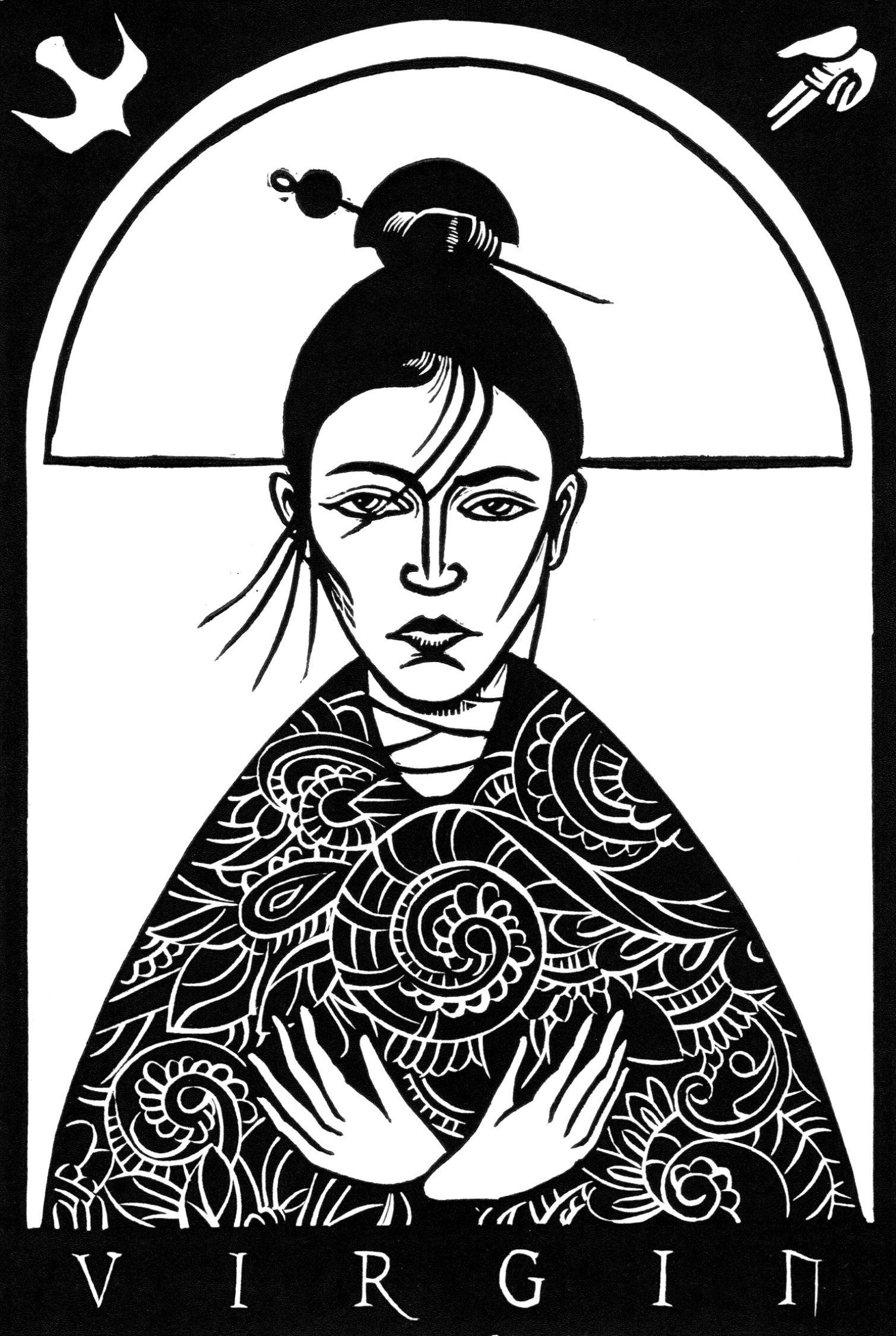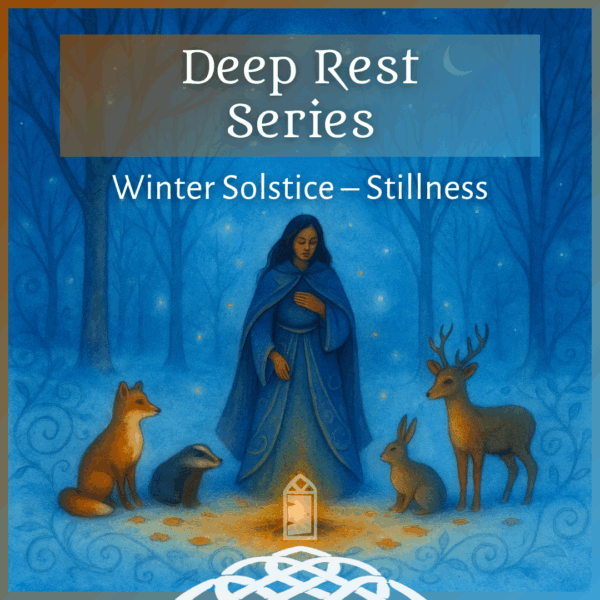Dearest monks, artists, and pilgrims,
I am in the final editing stages of my next book Birthing the Holy: Wisdom from Mary to Nurture Creativity and Renewal which will be published in April 2022 by Ave Maria Press. I love all that this project has inspired – another compilation album of songs we are working on and the next week in our Prayer Cycle series – all coming in the spring. In the book I focus on 31 of Mary’s names or archetypes which offer windows into those qualities we can call upon in ourselves as well. The sacred feminine is not at the expense of the masculine. We need both in healthy balance to one another. The feminine values qualities of intuition, dreaming, receiving, and resting among others. We all hold the feminine and masculine within ourselves. Mary offers us many faces of this sacred feminine presence and can help us to cultivate a slower, more intentional way of being in the world.
On December 4th I will be leading a mini-retreat for the wonderful people at Spirituality and Practice where we will be exploring three of Mary’s faces – Virgin, Our Lady of the Underworld, and Mystical Rose as we go on a journey from call to incubation to holy birthing.
Here is an excerpt from my forthcoming book on Mary as Virgin:
We begin with the title of Mary as Virgin, because it is perhaps one of the most familiar and most often used names for her other than Mother. The Annunciation which appears in the Gospel of Luke is the most well-known stories of Mary and has been painted thousands of different ways. An angel appears to a young woman and issues her a life-disrupting invitation. In art, Mary is shown with varying expressions – surprise, fear, joy, peace – depending on the artist and what moment of the encounter they are choosing to illuminate.
When the angel Gabriel visits Mary, she is given a choice rather than a demand. This is perhaps the most remarkable aspect of the story, that God allows her complete agency in the decision she makes. She is being called to partner with the divine to bring a holy child into the world. Mary is active both in her openness to the choice and saying yes to the angel’s invitation, as well as surrendering to the divine desire: “Let it be done to me.” This is an aspect of the sacred feminine at work – this holy yielding to what is being offered. The divine unfolding is dependent upon Mary’s full “yes.” Contemplative teacher Cynthia Bourgeault highlights that in this moment, it is God who waits upon Mary.
Jungian analyst Marion Woodman described the virgin archetype as having less to do with physical intactness and purity, as it does with emotional wholeness and sovereign power. The Virgin archetype is whole, belonging to herself, and impregnated with divine love. “She is who she is because that is who she is.” She is free of the dictates of family and culture. The Virgin reconciles all opposites within herself and has everything she needs within to bring new things to life.
Theologian Elizabeth Johnson describes the archetype of virgin this way: “More than a biological reality, being a virgin indicates a state of mind characterized by fearlessness and independence of purpose. Whether wife or mother, the virgin retains an inner autonomy. . . When this becomes the lens for interpreting Mary’s virginity, the resulting image can function spiritually and politically to encourage women’s integrity and self-direction.” This can be a much more empowering image of Virgin than we have traditionally received where Mary is often upheld as an impossible model of femininity.
Devotion to Mary as Virgin means being drawn to the power she contains within herself and radiates out generously to the world. We are drawn to her because she is a mindful and loving presence who reflects this gift back to us. She empowers us to find this independence of purpose and autonomy within ourselves.
The Virgin archetype invites us to integrate both the feminine and masculine energies within us, cultivating a deep connection to the divine within, and open ourselves fully to our own inner resources. She reminds us that ultimately we do not rely on anyone else for our sense of power and presence in the world other than the divine spark within. She insists that we have full consent over the direction our choices take us.
Sadly, the church tradition around virginity has held quite strongly to Mary’s perpetual physical virginity as the dominant aspect of her being. The early church’s upholding of the status of virginity as a holier kind of human state has often led to scorn for the physical, material, and sensual world. Mary has been used to uphold a model of femininity that is very restrictive and rejecting of the beauty and sacredness that sensuality and sexuality can offer to our lives. The shadow is what remains unconscious. All archetypes have a dark or shadow side which can be harmful when acted from without seeing clearly. For example, in the monastic tradition there has been an elevation of the path of virginity to a point that the body was often denigrated. It can encourage a dualistic approach to the world where body and soul become divided from one another.
Rather, the Virgin Mary calls each of us to consider our own innate wholeness. What are the messages we receive from family and culture that tell us we are somehow incomplete unless we lose weight, become more productive, earn more money, gain more success? Claiming the Virgin archetype means not questioning our worthiness and knowing that with every invitation, we hold the power to say yes or no. So many of us feel stretched thin by too many commitments and we forget that with every yes we respond with means we are also saying no to having enough energy for something else that might be important to us. Often this means self-care is necessary without apology and the nourishment needed to deeply replenish ourselves, avoiding burnout, and being of service in the world.
If you’d like to make some time during Advent to invite Mary to guide you more deeply into your own journey of holy birthing please join me on December 4th.
(And if you’d like to go more deeply into Breath Prayer as a companion retreat experience to my book, we are starting a 4-week series on November 29th.)
More ways to celebrate Advent with us below including a lovely yoga class with Melinda, a contemplative prayer service with Simon and me, and a retreat I am leading for Spirit of Sophia Center on The Spiral Way and Celtic Spirituality. See details below.
With great and growing love,
Christine
Christine Valters Paintner, PhD, REACE
Image credit: © Kreg Yingst (you can order prints at his Etsy shop)



